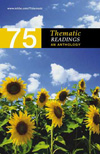
Nancy Mairs |  |
Nancy MairsNancy Mairs, "On Being a Cripple" Nancy Mairs (1943- ) was born in Long Beach, California and grew up in
Boston. She earned an A.B. from Wheaton College in 1964, and both an M.F.A.
(1975) and a Ph.D. (1984) from the University of Arizona. She has worked
as an editor and has taught at both the high school and college levels
in California and Arizona. While being a cripple (her preferred term)
is directly linked to her work and her self-identity, Mairs sees herself
as much more than that. She's also a mother, a wife, a pacifist, and a
radical feminist. Her books include Plaintext: Essays (1986), Carnal
Acts: Essays (1990), Waist-High in the World: A Life Among the
Nondisabled (1996), and Troubled Guest: Life and Death Stories
(2001). She frequently contributes to periodicals such as The Christian
Century, The Women's Review of Books, and the New York Times
Book Review. "On Being a Cripple" is an excerpt from Plaintext. | QUESTIONS FOR DISCUSSION | CONTENT - In what context does the author mention the Lindisfarne Gospel?
- What is a Pollyanna?
- At what age did the author begin to suspect she had a serious physical
problem? What was the first diagnosis? What was the correct diagnosis?
- About which personality trait does the author say that it's "the
easiest to lose and the hardest to survive without"?
- How does the author describe the relationship between multiple
sclerosis and divorce?
- Which physical activities are parts of this author's everyday life?
- In what location does Mairs begin her essay? What happens to her?
Why does she point out the fact that she was alone?
STRATEGY AND STYLE - How can you describe the tone of the title of this piece? What
do you make of the word cripple? Would your answer change if
Mairs weren't disabled? Explain.
- Discuss this piece as a division/classification essay. What is
the major division Mairs writes about? How does she proceed with her
classification? What types of support does she use?
- How did you picture Mairs as you went through the reading? (Note:
Some of the links below will take you to sites that contain pictures
of this author.) What specifically in the text led you to form this
mental image?
- In paragraph two, the author uses this grouping: "fates/gods/viruses."
In whose voice does she put this phrasing? What does this say about
her relationship to her disability?
- At the end of paragraph thirteen, the author uses a simile to compare
a fall she took to something else. Complete the comparison. What mental
image does this comparison evoke? Where else in the piece does the author
display this attitude toward herself? How does it help her?
| ENGAGING THE TEXT | - Recall a time when someone made a false assumption about you based
upon your physical appearance. What was the situation and what did you
do about it? Can you relate any of these things to Mairs's thoughts?
- What losses have you faced in your life? How did you respond to
them? Did any of them make you a better person? Explain, linking your
thoughts to your reading wherever you can.
| SUGGESTIONS FOR SUSTAINED WRITING | - Mairs writes that "anyone who deviates from the norm had better
find some way to compensate," giving the example that "fat
people...are expected to be jolly." Write an essay about social expectations
in this regard, using the author's idea to form a thesis statement,
and coming up with your own examples.
- Write an essay tracing the way the author examines issues of mind
and body to define herself. How does she determine her self-identity?
What did role models have to do with this determination? What are the
other important factors?
| FOR FURTHER RESEARCH | Mairs mentions that doctors and scientists had made some progress regarding
multiple sclerosis at the time of her writing in 1986. Do some research
and find out what major advances, if any, have been made since that time.
What is the state of funding for MS? What still needs to be done? Who
is doing it? | WEB CONNECTION | Read this review
of Waist-High in the World. After reading the review would you
like to read the book? Why or why not? What did you learn about the book
from the review? Can you link any of it thematically to "On Being
a Cripple"? | LINKS | Biographical Take a visit to Nancy Mairs own official homepage.
There, you'll find links to works, a biography, reviews, and e-messages.
It's a great place to start your online research. This biography
was prepared by the organizers of a reading Mairs gave in 1999. Although
it's not from her official site, does that mean it's necessarily less
trustworthy than the information found above? What are some of the ways
to determine the reliability of information you find online?
Bibliographical Click over to this page,
and you'll find "Body, Mind, and Soul: An Interview with Nancy
Mairs," which she conducted in 1997. Study these MS-themed reviews
of three of Mairs's books. Would you feel comfortable citing this page
in a paper about Mairs? Explain.
Cultural Interested in writing about the social issues connected with disabilities,
but not sure how to narrow such a big topic? Take a look at this related
directory
from Google.com and you'll come away with plenty of good ideas. Would you like to learn more about multiple sclerosis? The homepage
of the National Multiple Sclerosis Society is a great place to start
your research. You can even volunteer to help online. Read this review
of Mairs's Ordinary Time. What does the author think of the book?
What did you learn about Mairs's views of religion and marriage that
you didn't learn from your text?
|
|
|
|